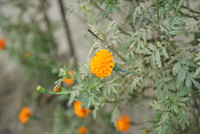Infectious Fungus, Thought to Be Asexual, Isn’t
*Candida tropicalis turns out to have sex, making it the second medically important member of the genus to be capable of mating. Sex may improve the survival of the species, particularly when it’s under pressure. It may also mean the species can achieve greater virulence or drug resistance more quickly than previously thought.*
PROVIDENCE, R.I. [Brown University] — The fungi of the Candida genus, known to millions of patients worldwide for their ability to cause serious infections, were once all thought to be asexual. Even after scientists discovered that the mating habits of Candida albicans were many and varied, they remained convinced that many of the more infectious ones did not mate. Now with the first report that Candida tropicalis can mate sexually as well, the chastity of the whole genus comes into further doubt. (more…)

